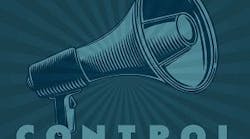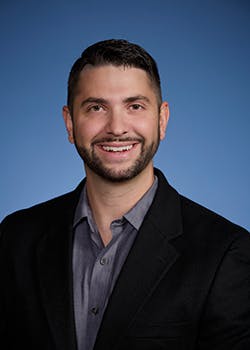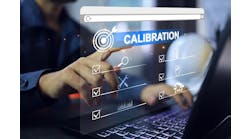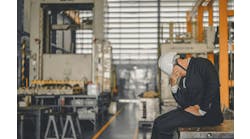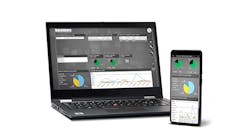When it comes to instrument calibration, people don't always understand what terms mean, and terms don't always mean what people understand them to mean. In this episode, editor in chief Keith Larson is joined by Robert Jennings, repair and calibration manager at Endress+Hauser's Gulf Coast Campus, for an in-depth discussion of the key points of calibration.
Transcript
Keith Larson: Hello. This is Keith Larson, editor of Control magazine and controlglobal.com. Welcome to this Solution Spotlight episode of our Control Amplified Podcast, sponsored today by Endress+Hauser. With me today is Robert Jennings, repair and calibration manager at Endress+Hauser's new Gulf Coast Campus in Pearland's Lower Kirby District near Houston. Welcome, Robert. It's a real pleasure to talk with you today.
Robert Jennings: Hi, Keith. Yeah, excellent. Thank you for having me on this podcast today. I'm very excited. It's a great opportunity and I'm looking forward to this.
Keith: Great, great. Well, it's good that you're joining us because our topic today is understanding calibration requirements and really what impact they have on industrial plants' performance. I think one of the first things to do is, as you and I have discussed, there's a lot of kind of loose talk around calibration. People don't always understand what terms mean, and terms don't always mean what people understand them to mean. Maybe we can kind of level-set by going through some key concepts around calibration just to make everybody aware of what we're talking about when we talk about calibration. Maybe from a big picture, you can talk about just the general concept of metrology first and a little bit about how it is what makes the world go round. Maybe you can talk a little bit about metrology.
Robert: Yeah. No, that's a great point. So when we talk about metrology, we talk about the science of measurement. And I think it's important to understand where instruments were before to where they are now, and we'll get more into that. When it comes to calibration, that term is used very loosely at times because at one point, commissioning or setting a span of a device used to be part or the actual calibration of the device. And now as devices have progressed, those can be stored into the data, and commissioning and sitting spans are very much different than performing calibration. And when we talk about the term of calibration from a metrology standpoint, that is the comparison of a known standard to the UUT or what we call the unit under test. And when you're doing calibrations, you want to make sure that you have traceability and the test equipment. And that traceability should be traced back to the highest level of, for us in the United States would be NIST, things like that. And it's also important to understand the difference between a calibration and verification. When we talk calibration, we want to make sure that we have what used to be called TUR or total uncertainty ratio, what is now called the measurement capability. And you want to observe a higher level of accuracy or lower uncertainty, when we're talking metrology, of your references to your unit under test. And the typical measurement capability would be a 3 to 1 ratio. So you would want to be three times more accurate than the unit under test.
And when you also get into testing the devices, you have different points that you would select to do those calibration runs, those comparisons. And you also want to make sure that you have some redundancy in those to make sure that it's repeatable. Because if you just test at one point, then if you test at that same point again, is the measurement also performing to that same level, and that is also important. Because it's one thing to make an adjustment and make a device more accurate, but if it's not repeatable, which way do you go? Do you go high, do you go low? And so understanding the device and the characteristics of it will help you through those steps.
Keith: Yeah, that makes a lot of sense. And in some cases where you're doing your measurement, it may be more critical to be repeatable than it is to be accurate. So you have to know how your instrument's being applied, right?
Robert: Yeah, very much so. You know, from an operation standpoint, an operator knows what they're doing, they know how to make their recipes or their batches. And regardless of how accurate the device could be at that time, if it's consistently repeatable and they can reproduce the same results, the end product may be more important than actually the device for them.
Keith: That makes sense. Another term that comes to mind, and I guess it really applies more to the calibration processes that take place before a new instrument leaves a manufacturer's facility, is characterization. Can you explain a little bit more about what that is as well and how it helps to boost the performance expectations of many of our smarter instruments that we have today that are digitally enabled?
Robert: Absolutely. So when we get in the characterization, a lot of different instruments have what we call their accuracy statements. And when a manufacturer produces an instrument, regardless of the discipline, they know how that instrument should perform based on tried and true methods from the calibration and the design of the instrument. For instance, when you talk about a Coriolis meter, mass meter, or magnetic flow meter, they both have what we call a calibration factor. And they also have a zero point factor. And so you can change not just the linearity. You can make slope changes and different things like that, where when it comes to something like a vortex flow meter, they don't have that zero point in them. They just don't perform as well down at the lower velocities. And they're not spec'd as such. So you really want to understand how the device technologies should perform. And just regardless whether the manufacturer is Endress+Hauser or another third-party, those disciplines and theories are operating in the same methods. And so as a manufacturer, we understand those. And it also helps us when suited to do a recalibration for a customer because it can also help with ensuring that the application is in the right span for where they're operating, and ensuring that how the calibration results also match how they would like to see this perform in their process.
Keith: Yeah, that makes sense. You know a lot about laboratory calibration since you're running a pretty significant calibration operation there in the Gulf Coast. There are several pillars that I think of that support best practices in terms of laboratory calibrations, and that includes your references, standards, procedures, controlled conditions for when you have a unit under test, but also training and competency of your technicians that are doing the calibrations. Can you kind of step through, maybe use an example of, I don't know, a six-inch mag meter or something, and how each of those elements come into play, and how you do a laboratory calibration?
Robert: Yes. So, you know, a lot of the calibration methods that we have when we're calibrating used instruments that come back in from the field, we've adopted a lot of the same methods that we use when we manufacture them. And when we calibrate a six-inch mag, for instance, you have a lot of pieces to performing calibration. One, you have to have, again, equipment that is far superior than a unit under test mag meter. Now they make mag meters with uncertainty of as low as 0.2%, plus or minus. So that takes something that's at least three times as accurate from the equipment standpoint with the uncertainty budgets. So you have to have good flow references and the ability to also pull the outputs of the device. You also have to have controlled conditions during the calibration. There are some rules in ISO 17025 when it comes to flow calibrations where you're not able to interrupt things like the flow profile. So, you know, any changes in the flow rate or pressure, line pressure, things like that have to be controlled. So it takes very good equipment and methods, and we use procedures that are also challenged and gone through international standards. So we hold ISO 17025 credentials, and so, you know, that is the highest level that we have to go to. And so we have procedures, we have individuals that go through over an apprenticeship program with us. We want to make sure that they understand how the devices perform, and how they operate, and the theory behind them before we want to put someone on performing a calibration and then potentially making an adjustment, because you don't understand the device, you could have a process condition that gives you certain characteristic out of the device and you need to be able to determine what is going on. Is it something with the process? Is it something with the device itself?
Ideally, you don't want to have to try to adjust instruments. You want your devices to perform stellar, year after year. And so having, you know, experienced technicians with know-how, having procedures to be able to follow and perform calibrations in a similar method time after time, having a controlled environment. You know, we find that there's lots of different equipment that we use to build a flow rig. And to do that, you have to have...the uncertainty is calculated and budgeted for of all the test devices. You want to make sure that you're, again, operating in reference conditions for those other instruments, whether it's an electrical reference or a flow meter. And so there's a lot of pieces to that. And then having the right information on the unit under test to be able to perform a calibration that makes sense. A six-inch mag meter can flow a lot of volume. And so you would want to make sure that you're calibrating at flow rates that make sense for that technology, that they're high enough in the velocity to ensure that you can check the zero point stability as well as the calibration factor of that device.
Keith: Yeah, so a lot of elements and a lot of factors to take into play. Not to complicate things further, but sometimes it's desirable to calibrate an instrument using the actual process conditions and process media as part of a larger system that might include a I/O card, or transmitter, or HMI display. What kind of industries do you see really requiring that in situ testing and how do you accommodate that in your calibration practices? And how does that affect your expected results typically?
Robert: Yeah. No, it's a great point. And we see time and time again that when it comes to customers and, you know, life science, and food and beverage, as well as even the oil and gas, they really like to calibrate either in their process conditions or with their process fluids. And that can be quite challenging because now you don't have the nice safe control of doing a flow meter calibration, let's say, with water in a lab environment. And so now you might be in West Texas, and it might be hot, you might be having to deal with things that, you know, temperature swings and uncontrolled process conditions. But at the end of the day, that could be what's important to either the regulatory requirement or the customer itself, because they really want to see how is this device performing. Because it's one thing to say that a device performs great in lab conditions, we would hope that they all do meet the spec, but it can be another challenge to do that in the field. And so it takes a little more planning to be able to do that, a little more coordination from the customer. They're going to have to have some resources dedicated to help to do that, to execute on that. Because we can bring a reference in and some equipment in, but to be able to run their process, you know, if we're talking flow calibrations, field or proving, then we would want to be able to have some controlled flow and the ability to stop and start when it comes to something like, say, temperature calibrations where they may want to use the RTD.
It could be coupled to a transmitter. And then also going to an HMI. There could even be a recorder in there. So you could have up to four different components. And what is the biggest challenge with temperature that we see is that temperature is usually held tighter than what it can be when you add in all the uncertainties of all those other pieces. You know, the transmitter has an uncertainty, the RTD has an uncertainty, the HMI has that, and all those things have to be an affording [SP] compound. And then you may do your calibration test and then find out what we need to make an adjustment. We need to make this read better, what it was as found conditions. Well, now, sometimes that takes a little more investigation, because where do you adjust? You could easily go to the HMI if that's what operations and quality says this is the end-all. But what if it's actually in the transmitter? What if there are some offsets that were already put in previously from a previous calibration where maybe the RTD was changed at one point and the transmitter had some bias in there that was left from the previous device before that change took effect?
Keith: Yeah, that's a good point.
Robert: These calibrations can take quite some time when you run into making adjustments. And then even being able to just determine what is the correct MPE, or max permissible error, for that system calibration.
Keith: Makes sense. You mentioned a little bit around, obviously, compliance requirement and regulatory drivers that dictate calibration practice of those standards. What are some of those? And how did they vary by industry in terms of how they affect your procedures or the reporting that you do?
Robert: Yeah, it turns out, as time goes by, we have more restrictions and regulations in the world than the previous years. Right? So I think Thomas Jefferson once said he'd like to abolish laws and start over every 19 years or something like that. What a world we would have today if that was the case. Anyway, yeah.
Keith: Seldom get a clean sheet of paper, do we?
Robert: Right? So as these restrictions and regulations come into play, you know, a lot of it is geared towards environmental and safety. We have things that come out from regulatory authorities like FDA to ensure that things that come into contact with anywhere from pet food to, you know, topical things that people put on their skin, to things that people ingest, and medicine, we have to make sure that there's some consistency and safety factors to ensure that people stay safe and, you know, we can have a better world that we have today as we go forward. And so those things come into play, and a lot of those have some blanket statements where things have to be calibrated at set intervals. It could be, you know, annually. Some industries have more frequent. And a lot of it depends on how much usage is this instrument seeing. We have customers that run billions of dollars of product through flow meters annually. And so, you know, it may not just be the regulatory requirement requires it, but it also could be a financial decision for them to stop and pull the calibration and ensure that that is good, you know. When it comes to things like custody transfer, we want to make sure that we have goods that are exchanging between different parties, and that party is both receiving and sending out what it is that they say that they're, you know, trading for, whether it's other commodities or finances.
Keith: And I think that there's also regulatory requirements around emissions as well, which was probably only going to get more important as we look at mitigating climate change and other issues like that.
Robert: Yeah, definitely. I mean, you know, there was some news that came out a couple of years ago with one of the regulations with IMO where we're pushing as, you know, the organization globally to be able to lower the emissions that the fossil fuels produce and have lower sulfur distillates to help lower and lessen the cancer rates and, you know, fatalities that we have from these type of pollutants that go into the air in the atmosphere. Unfortunately, we need a lot of these things in our life to have all the things that we have to make it through our days. So, you know, it's definitely a challenge. And as populations grow, these challenges become bigger, and so we have to get smarter and challenge ourselves to do better and make things safer as a whole. And calibration and regulations help get us there.
Keith: Back to that central role of metrology in sustaining society.
Robert: Yeah.
Keith: Absolutely. Well, to jump to, I guess, a kind of a not a bigger topic, but a more targeted topic, you talked a lot about all the factors that go into successful calibration. How can a process facility begin to create a program that ensures all its instruments are calibrated at optimal intervals? And by that, I mean, often enough to ensure accuracy is within those maximum permissible air levels, but also not so often that you have unnecessary efficiency, doing it more often than you need to. And sometimes you can, if you have to pull an instrument out and mess with it and put it back in, you're creating risk as well. How do you go about creating that practice within an end-user facility for ensuring that you're calibrating at optimal intervals?
Robert: Yeah, that's a great point. And again, some of these are also mandatory from regulatory requirements. So, sometimes they may not be what's best, and more efficient, and effective, but it's just what it has to be to meet that need. But we see a lot of end users that try to start calibration programs and, you know, that is, when it comes to calibrations and procedures and things as such, it's good to look at it as a living organism, right? And we have procedures as an ISO 17025 calibration provider. And, sure, over time we learn new things and new information comes out. And so things are set by the book, but the book is intended to be evolved and made better over time. And so I think it's important to look at things like criticality of the device and to help classify it. It would behoove a customer to spend time to look at their instruments, and what it is that they're doing, and the impact that those instruments and other assets have on the process. Safety standpoint, from a quality standpoint, ensuring that these devices that make the biggest impact are definitely looked at through a more stringent lens to ensure the calibrations are good. And so I think you start with getting a list of your assets and classifying them, and then going through and beginning the calibration process. It may turn out that you have really good instrumentation, and those instruments could actually not need as many calibrations as you currently are calibrating them. However, it takes data to come up with that. It takes, you know, years of data points and looking at statistics to be able to determine, is there a need for more frequent calibration, or maybe we can loosen this up and do less calibration? So we have customers that have literally have instruments that are calibrated every three months, and they've been doing this for years. And now they are using the data because the instruments performed so stellar over these years that, well, now they're pushing it out to six months and they feel confident in that.
I think the main thing is feeling confident. When you do a calibration, you're not only checking the instrument and seeing how the performance, but you're gaining that confidence in that instrument. As you gain that confidence and you collect that data, you can go into it and then determine, yes, we want to try to push this out. And then those decisions should take time. They should take thought. And you know, sometimes when you have to adjust something, maybe you do a more frequent calibration afterwards. That way you can monitor that device because you could have five of the same assets and one of them seems to get adjusted every time it goes in for calibration. So let's maybe treat that as an anomaly and let's isolate that. So maybe we keep the calibration intervals for that asset the same, and then maybe there comes a point where, depending on how big of adjustments are over time, maybe time to replace that device, something else. And so through data and calibration, you can make those decisions.
Keith: Yeah. It makes a lot of sense. Makes a lot of sense. Well, given the just overall higher performance capabilities of today's instruments, the performance of the calibration infrastructure needed to support those instruments has also gone up when you talk about the factor of three from one level to the next in terms of ensuring accuracy. What factors go into a plant's decisions to do their own calibrations, especially given these more demanding environments versus engaging with the third-party specialists who do that? Or are there certain situations where you want to have a third party come in or...? What are the factors that go into that decision, I guess?
Robert: Yeah, I think a lot of it comes down to a few factors of, one, price. How expensive is it to do your own calibrations vice sending something off or having a third party coming in? The other is the know-how. I mean, there's a lot of customers, end users, people out there that feel comfortable doing their own pressure calibrations, right? And so they have the modules, and, you know, the pumps, and the ability to apply pressure and check those. And for some, that is good enough and that's okay. The other factor is what we talked about, things from the regulatory requirements. There's a lot more scrutiny from those people that want to know that you are sending a device off to calibration. Because if you're a process company, and you're making a product, and that is your core competence, more than likely calibration is not. Now, we talk life science, pharmaceutical, they may have their own metrology team, and that could very much be handled in-house for most, if not all, their calibrations because that's what they do and that's their metrology team's core competence. So that also is a factor to ensure that you have an unbiased third party come in, that could also be much value there. And the other is, again, how challenging it is. And we talked about how expensive it is when we were talking about instruments like Coriolis mass flow technology, and they have changed the game with measurement capability. The rules of metrology, what used to be 3 to 1 ratio mandatory for the reference to the unit under test, and Coriolis, that takes millions of dollars to do that. Now, Coriolis is so accurate that you may only can get by with 2 to 1 ratio.
And so as devices become more accurate and more intelligent, when you have things like...Endress+Hauser has on-board technology like what we call Heartbeat, Heartbeat Technology. So what that does is there's actually some redundancy electronics built in with quartz prisms in there that help map the device out when it leaves the factory, how the electronics perform. And it does test in the background, that can be on-demand or... And it doesn't just...as the device is powered on, it's always monitoring and being able to pick up if there's any shifts in fluctuations in the electronics. So, you know, as time goes by, we keep getting smarter and smarter electronics. We even have temperature devices that in past carrying point, where there's a point where it can actually check itself because there's this known temperature at this phenomenon that happens. And so all you have to do is pass that temperature point and then you're essentially doing an internal calibration. So a lot of the devices now are coming with intrinsic references built into them. And so it may not meet the regulatory requirement today, it may still have to do a calibration because...and that can also be looked at as a verification to some, but it could definitely help you get some data, as we talked about, as to when it is a good time to pull device. If your device is telling you, hey, you need to look at me, there's something going on here, that's a good time to do an impromptu calibration and not just wait for an interval. Right?
Keith: Yeah. Listen to the source of information that knows the best. Yeah.
Robert: That's right. Instruments are going to report what they see, and it's up to us as, you know, instrumentation folks to look at that and see what is really happening here, you know? So yeah, the, I mean, standards that we have today and how technology has advanced, it's not what it was before. And it will continue to get better and tighter. And really, you know, it's a lot of times the devices that we manufacture and others too are far better than what is demanded for the customer's process. So that's good stuff, you know. Customers may have a spec of 1% and they may be using a 0.1% device and that's great. That means you're gonna be okay, you know. As long as that device is performing well with good calibration, you're going to be well within the means.
Keith: Well, absolutely, absolutely. I really appreciate, Robert, you taking the time to walk us through some of these concepts and really document how much better instruments have gotten, and hence how much more challenging calibration has gotten in the process. So thank you for shedding some light on that. Once again, our guest today has been Robert Jennings of Endress+Hauser. And we really appreciate you for taking the time, Robert. Thanks.
Robert: Absolutely. Thanks for having me. Really appreciate it, Keith.
Keith: For those of you listening, also thanks for tuning in. Thanks also to Endress+Hauser for sponsoring this episode. I'm Keith Larson, and you've been listening to a "Control Amplified Podcast." Thanks for joining us. And if you've enjoyed this episode, you can subscribe at the iTunes Store and at Google Podcasts. Plus, you can find the full archive of past episodes at controlglobal.com. Signing off until next time. Stay safe. Bye now.
For more, tune into Control Amplified: The Process Automation Podcast.
